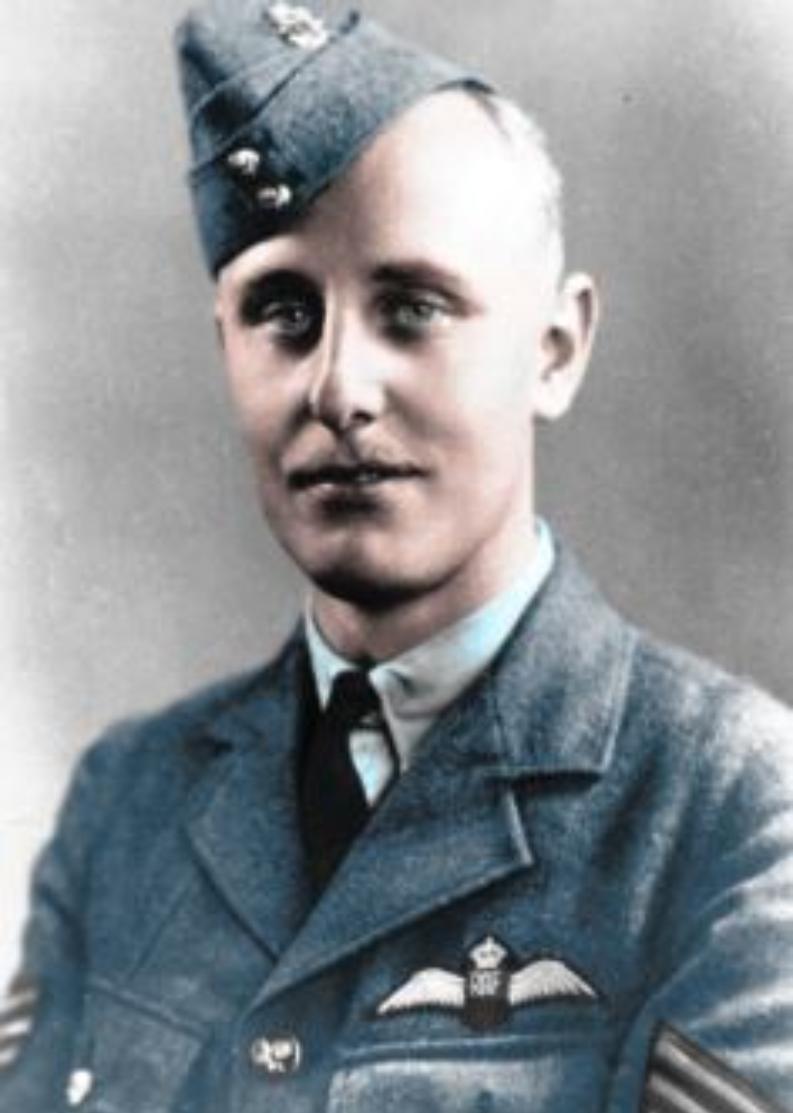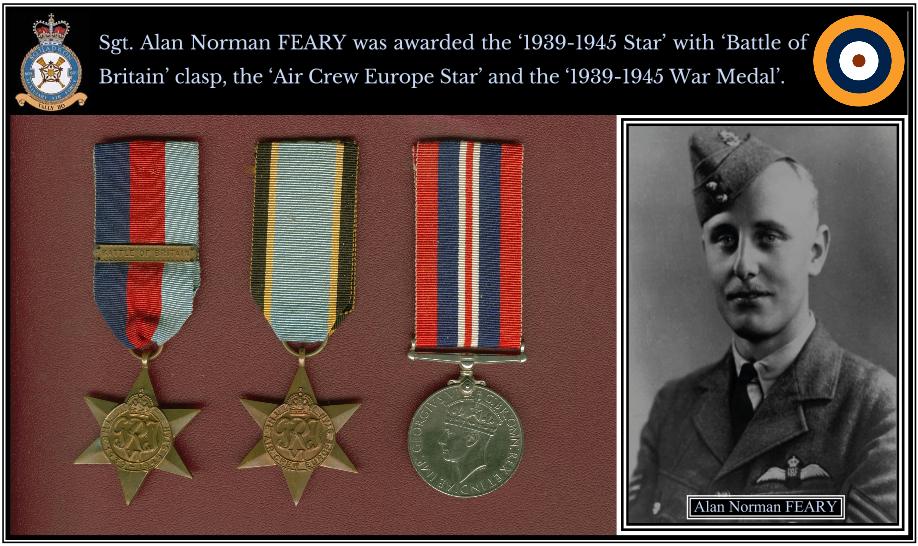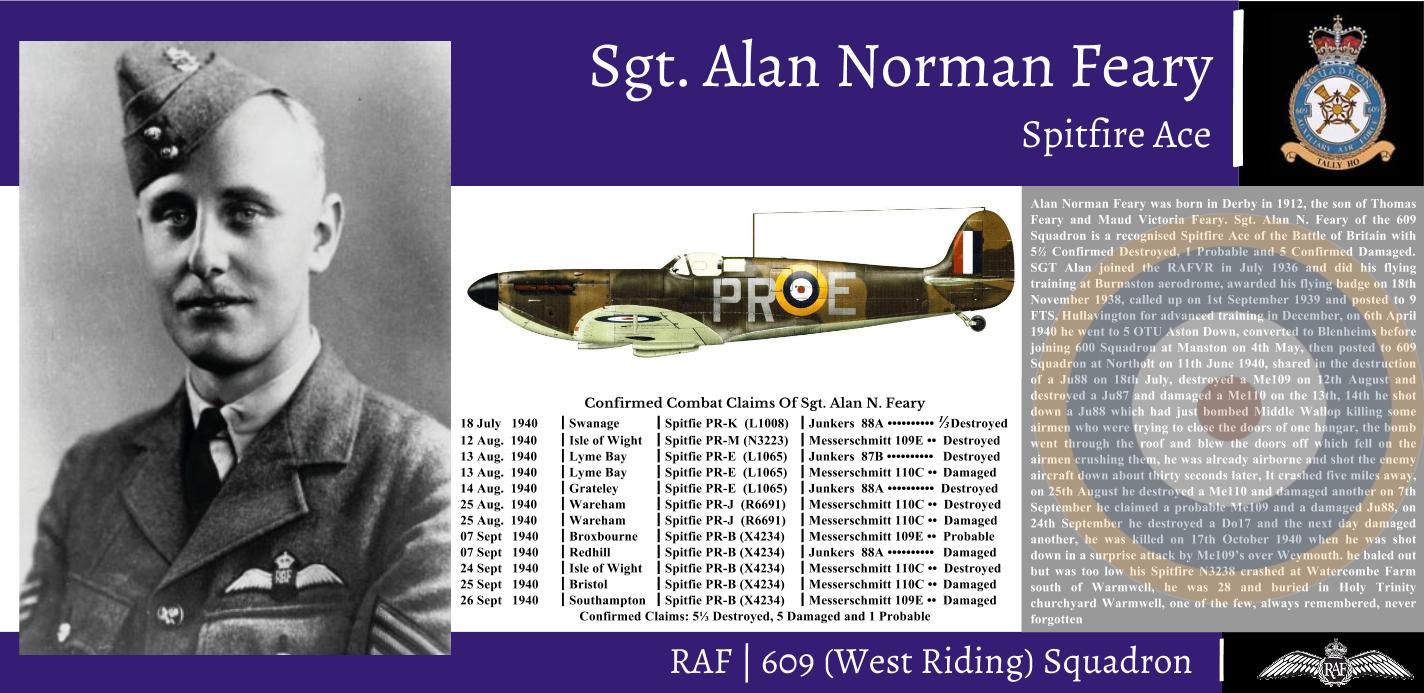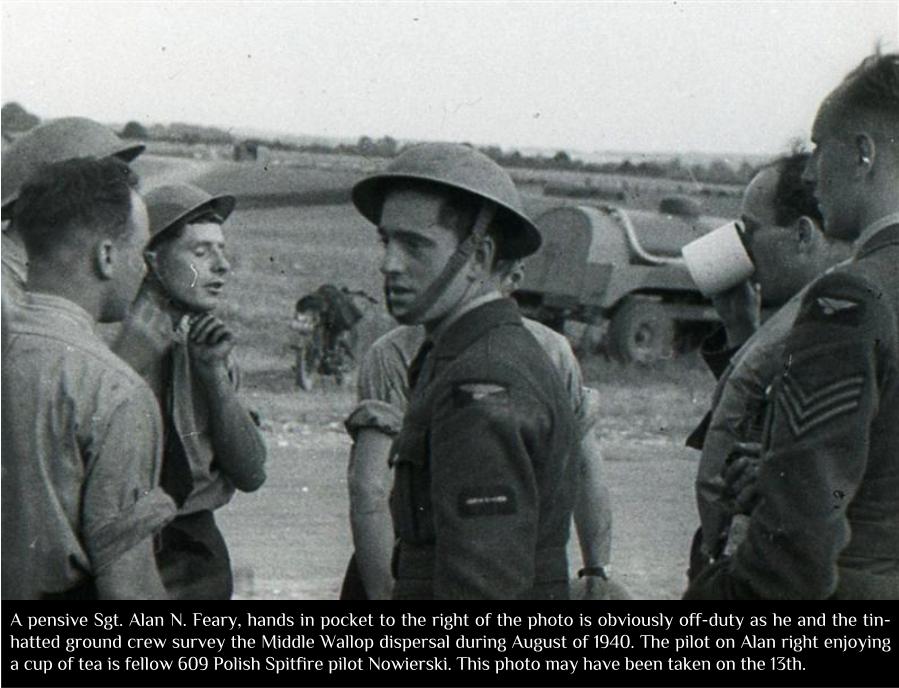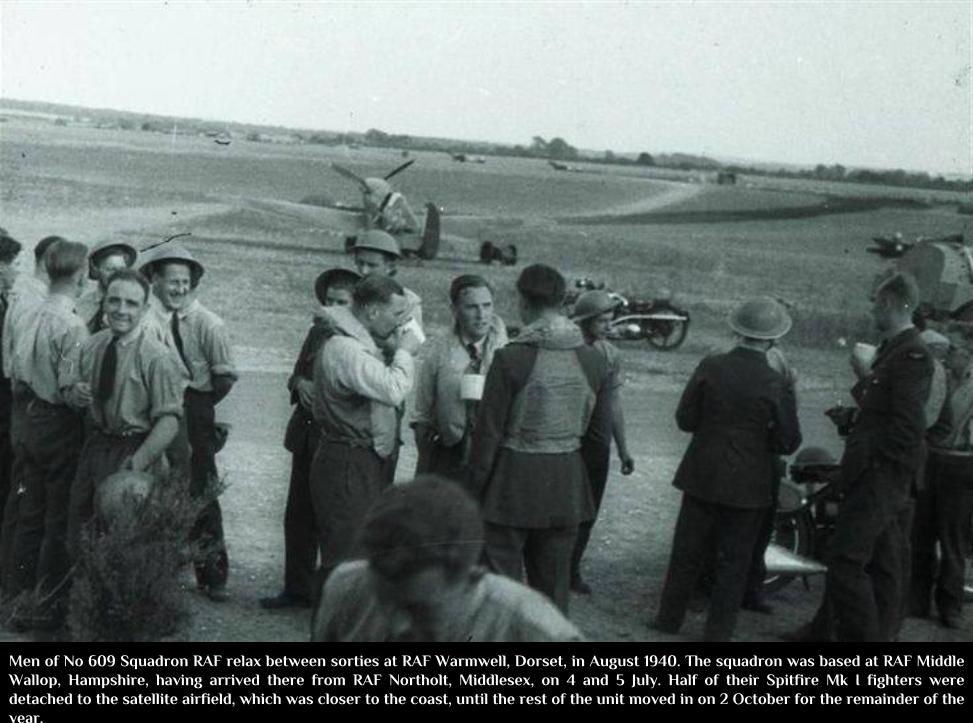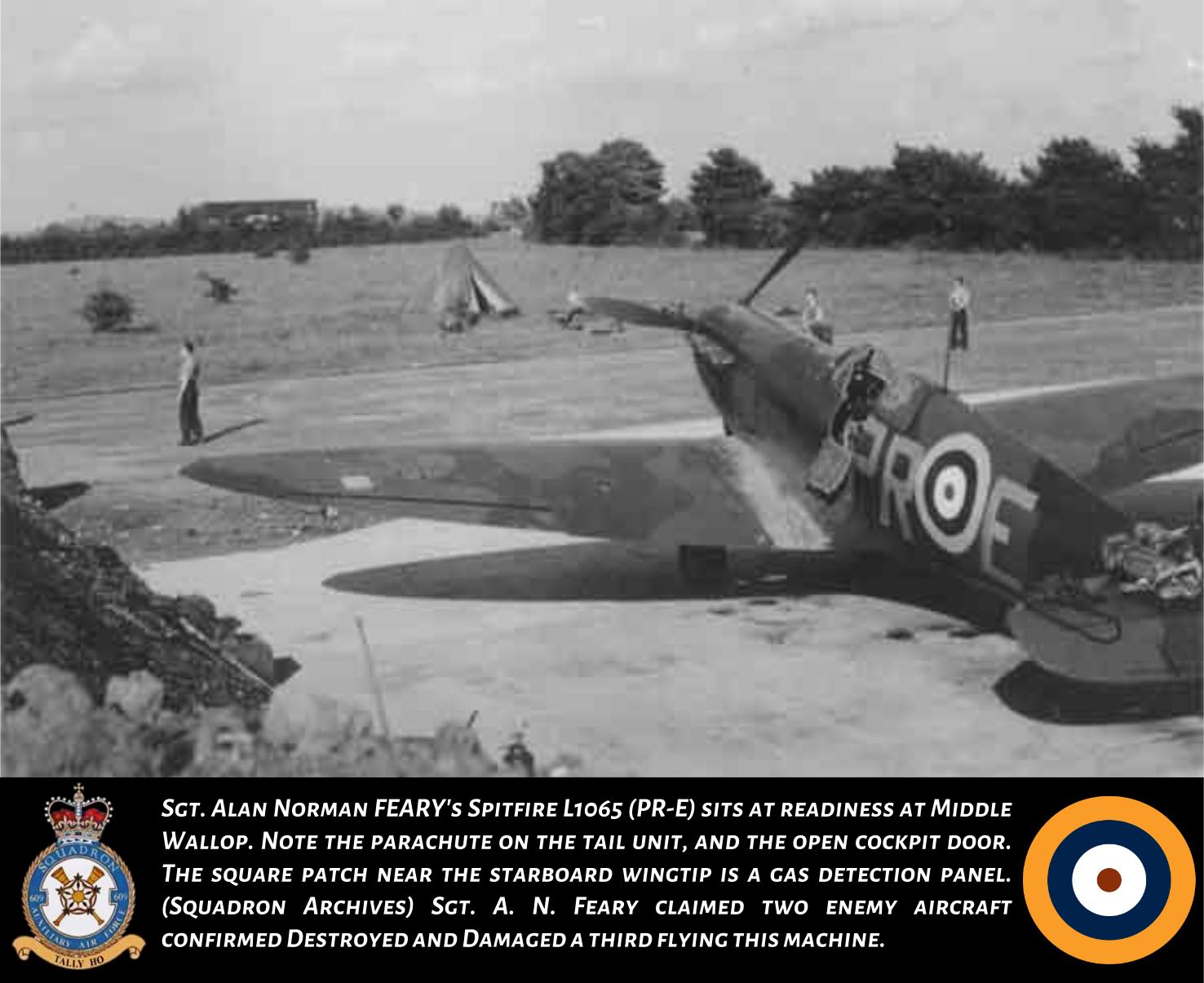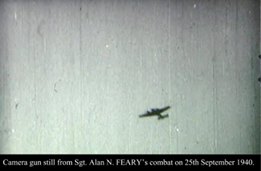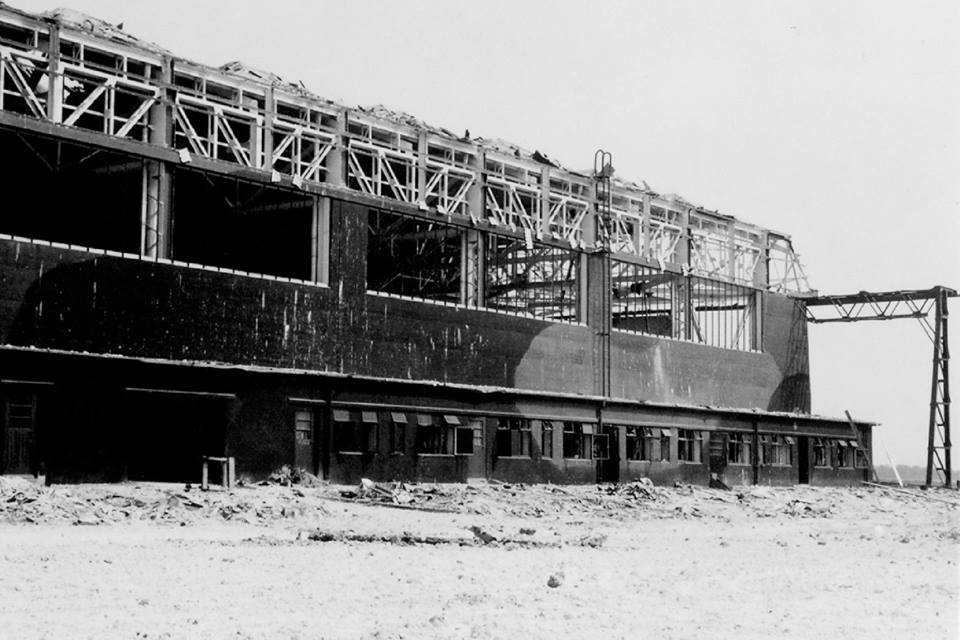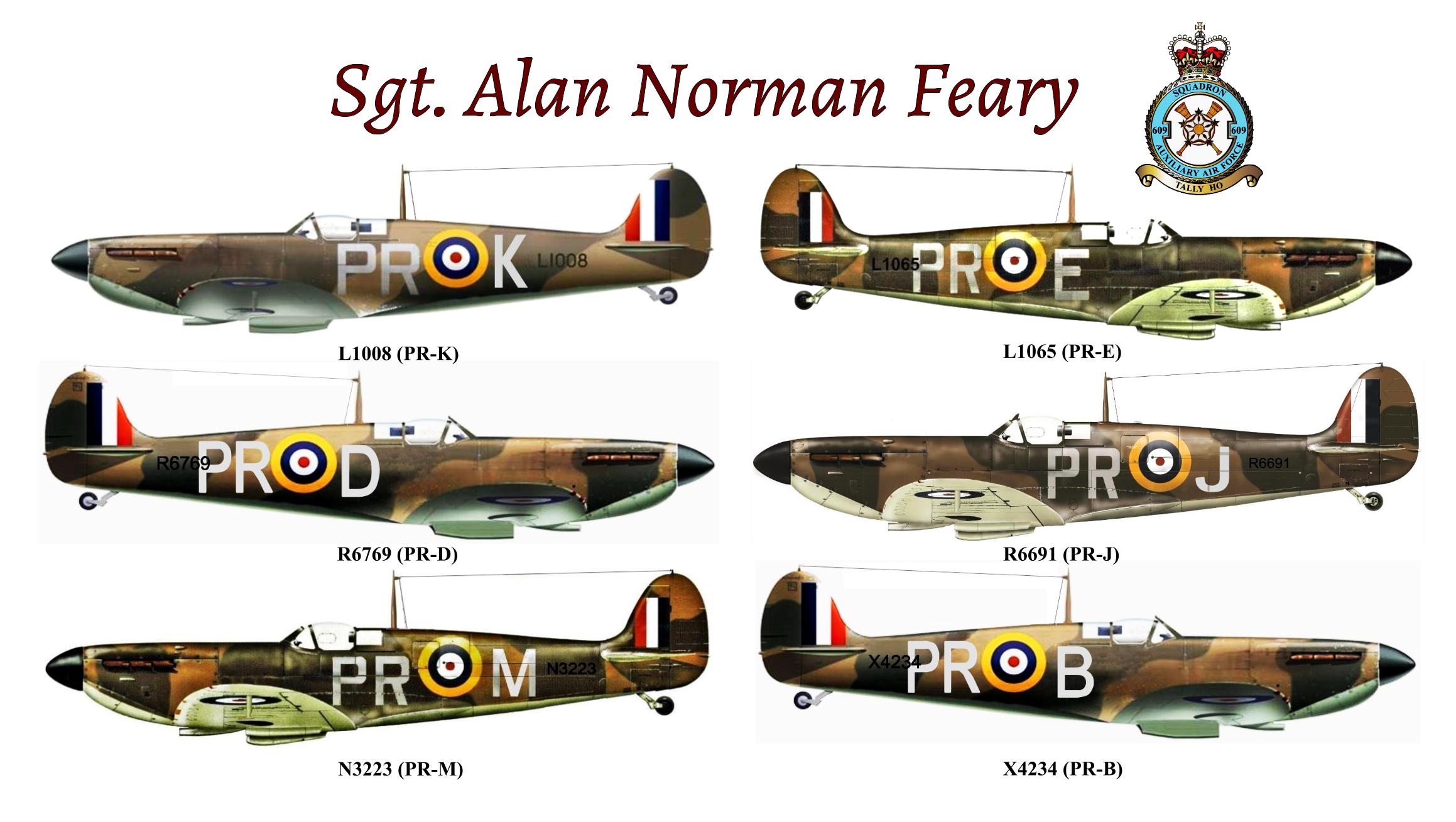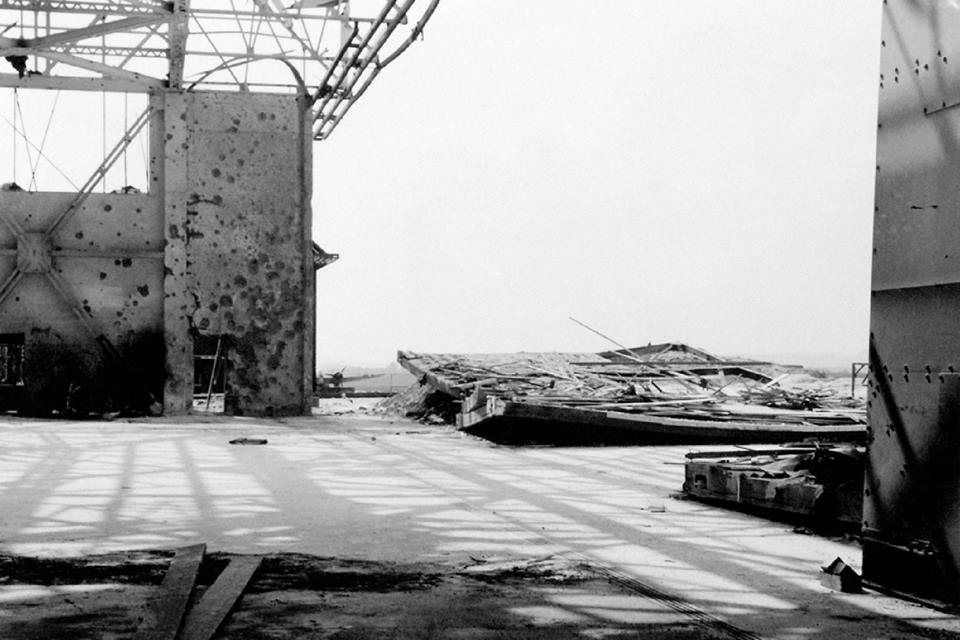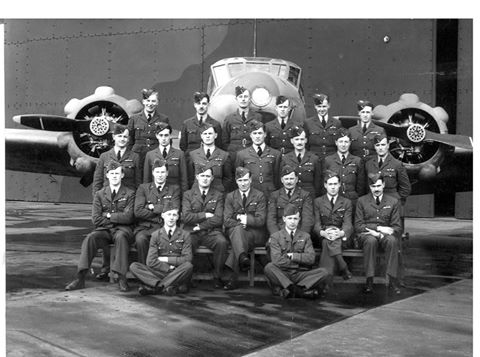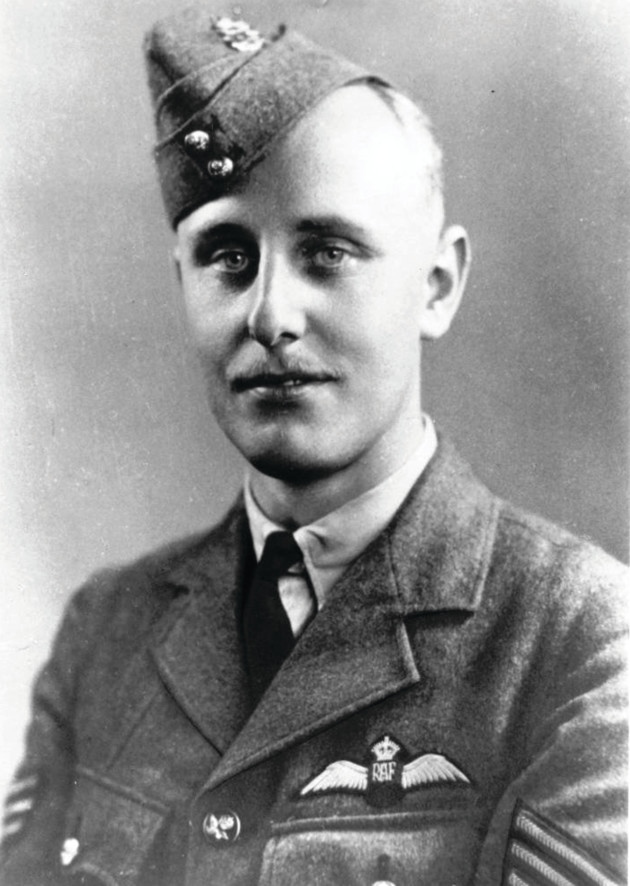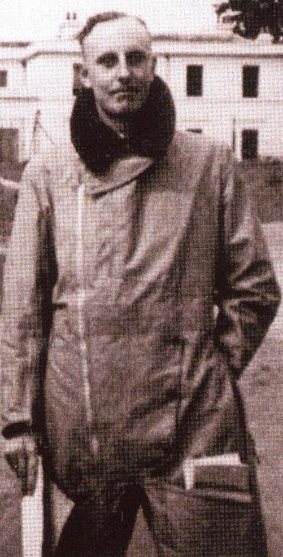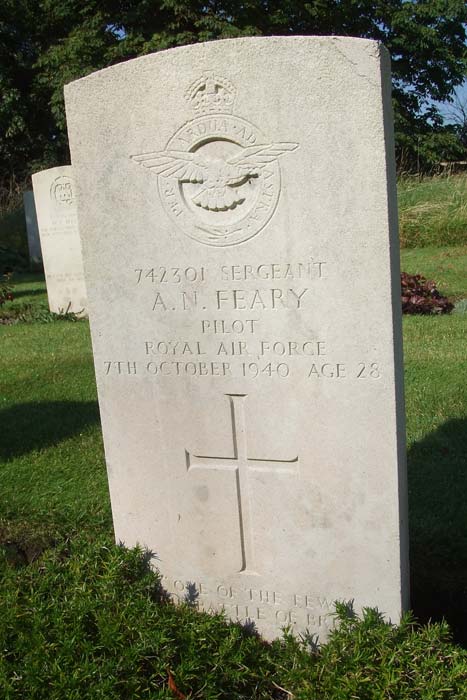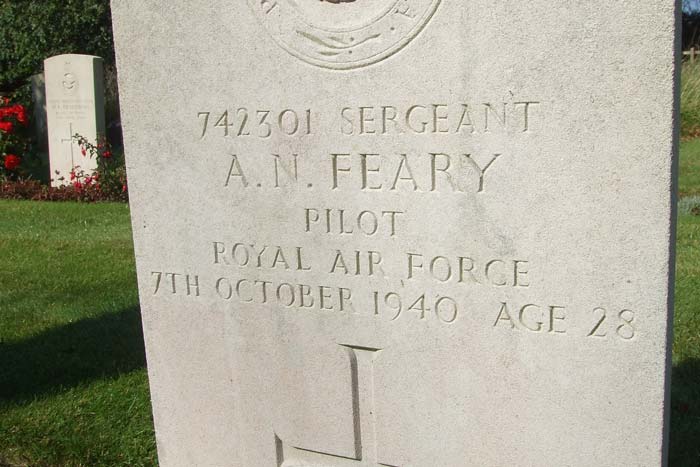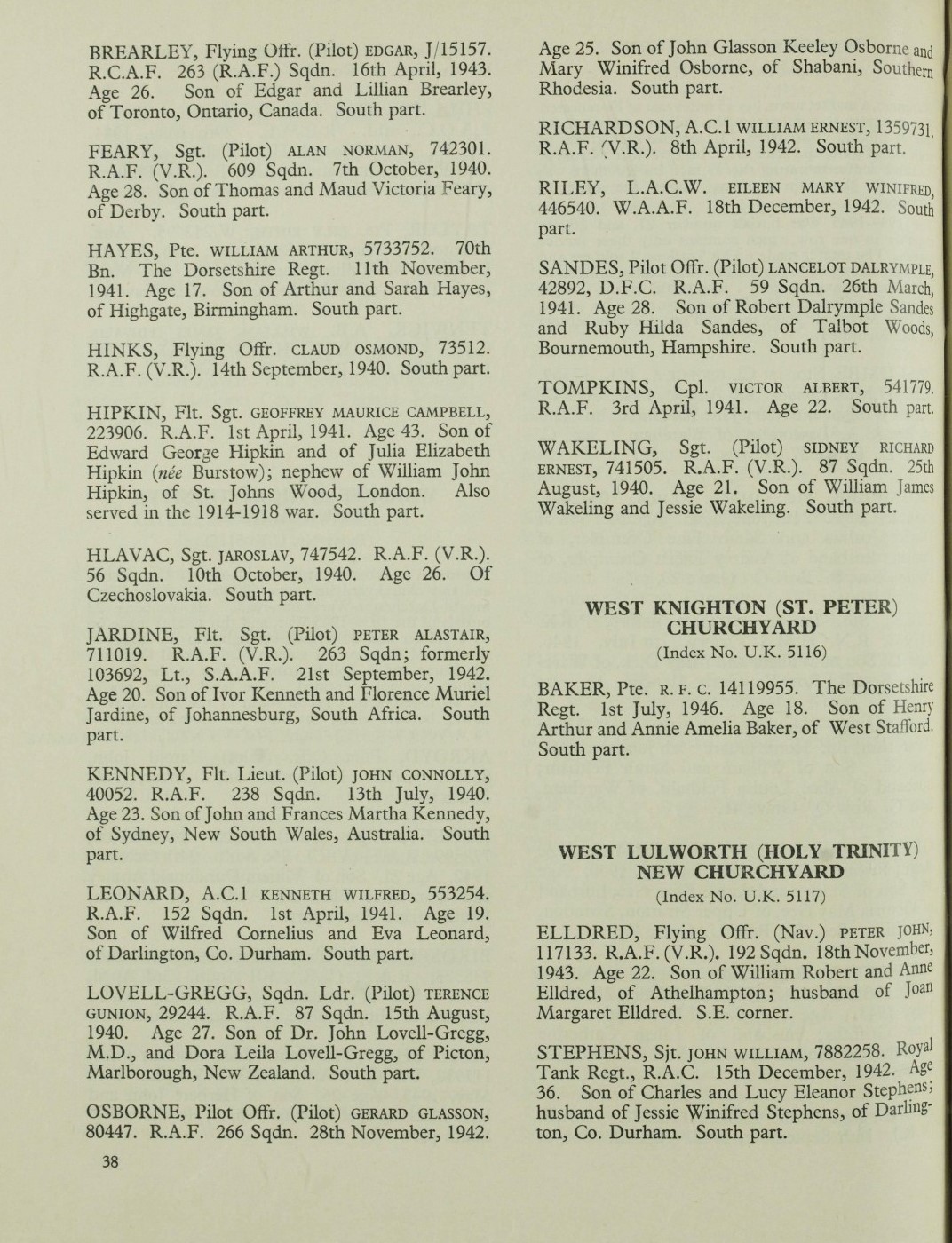FEARY, Alan Norman
Stats:
rank: Sgtstatus: kia
airforce: RAF (no: 742301 )
born: 1912-04-18 Derby United Kingdom
added by: Spitfire609
Bio / Text:
Sgt. Alan Norman FEARY, (742301)
Sgt. Alan Norman FEARY, RAF Service Number : 742301 of the 609 (West Riding) Squadron is a recognised Spitfire Ace of the Battle of Britain who flew with the 609 Squadron out of Northolt, Middle Wallop and Warmwell. Alan Norman Feary was born in Derby on 18 April 1912 to Maud Victoria (nee Steele) and Thomas Feary. He was educated at Derby Municipal Secondary School and worked in the Borough Treasurer's Department. Alan joined Class 'F' of the RAF Reserve as an Airman u/t Pilot (700193) in July 1936 and transferred to the RAFVR in October 1938 and did his flying training at Burnaston aerodrome, gaining his wings and awarded his flying badge on 18th November 1938. Alan Norman Feary was called up on 1st September 1939 and posted to 9 FTS, Hullavington for advanced training in No 12 Course which ran from October 9 to December 9. On 6th April 1940 he went to 5 OTU Aston Down, converted to Blenheims before joining 25 Squadron for six days at North Weald, on May 4. Sgt A. N. Feary was then posted to 600 Squadron at Manston on May 10 and finally to 609 Squadron at Northolt on 11th June 1940.
The 18th July was Sgt. Alan Norman FEARY's baptism of fire as he experienced his first claim as he shared in a one third confirmed Destruction of a Junkers 88 while piloting Spitfire Mk I L1008 (PR-K) in the skies south of Swanage. Less than a month later on the 12th August 1940 he got his first solo confirmed Destroyed a Messerschmitt 109E over the Isle of Wight while flying Spitfire Mk I N3223 (PR-M). An extract from 'A Few of the Derbyshire 'Few' (Derbyshire Fighter Pilots in World War II)' by Barry M. Marsden details the events of the 12th August 1940-
"...when just after mid-day the enemy launched a heavy attack on the Portsmouth area- 'the whole German Air Force bar Goering' as one wag put it. 609 became tangled up with escorting Messerschmitt 110 two-seater and 109's over Needles. Alan, flying N3223 (PR-M) in the Yellow 3 slot, broke through a milling shoal of twin-engined 110's and found a trio of Me 109's circling in front of him. A three-second burst at the rearmost produced no result, but he fastened on to the 109 leader as the enemy pilot dived away to attack two Spitfires below him. Following his opponent into the dive he loosed off some ten second's worth of .303 ammunition from his eight wing-guns as the German crossed his sights. The enemy fighter flicked over on its back and fell away into a vertical death-dive, plunging towards the sea. He then fought a brisk running battle with the remaining Messerschmitts till his ammunition gave out, and in his own words 'pushed the red button and came home.' A claim of one Me 109 confirmed was allowed, in the first of a series of combat clashes he was involved in over the next few days."
The following day 13th August 1940 became one of the defining battles of the 609 Squadron, the German aerial offensive Adlertag (Eagle Day) began, a day in which a momentous arial battle of air supremacy was fought in the shies above England. 609 Squadron scrambled from Warmwell at 3:30 pm. Alan flying as Red 2 piloting L1065 (PR-E) destroyed a Ju87B and damaged a Messerschmitt 110C of IIStG 2. John Dundas recorded in his war diary;
“A major effort was made by the Luftwaffe on 13 August 1940. Christened Adlertag ("Eagle Day"), the Germans began a series of heavy of air attacks. At 15:30 NO. 609 Squadron was scrambled, with Dundas flying in R6690 (PR-A) as number four in red section. At 10,000 feet (3,000 m) he spotted German fighters. Red leader could not see the enemy and instructed Dundas to take the lead. Climbing into the sun at 18,000 feet (5,500 m), Dundas saw Junkers Ju 87 Stuka dive-bombers below him. Attacking he shot down one of the Ju 87s from Sturzkampfgeschwader 2 ("dive bombing wing 2"). Dundas damaged another before being hit. He made a "dead-stick" landing at RAF Warmwell. The German unit that 609 attacked was badly hit. One Staffel ("squadron") of II./StG 2 lost six out of nine Ju 87s.”
The Eagle Day 609 claims became known as ‘Unlucky 13’ because on the 13th August 1940 the 13 active pilots of the 609 destroyed 13 enemy aircraft of the German Luftwaffe while suffering no losses, this achievement was 609 Squadron's most successful action to date. Why ‘unlucky’? It was unlucky for the Germans.
On the following day the 14th August 1940 at Grateley, Middle Wallop Airfield while again flying Spitfire Mk 1 L1065 (PR-E), Sgt Alan Norman FEARY shot down and Destroyed a Junkers 88A from 2/LG1. The Ju 88A had just bombed Middle Wallop Airfield, killing three airmen who were trying to close the doors of Middle Wallop Airfield’s Hangar 5. The German bomber which had just bombed Middle Wallop airfield killing several ground crew and civilians who were trying to close the hanger doors suffered swift vengeance. As the German bomber was diving on its target, about thirty second after the Ju88A had dropped its bombs Alan shot the enemy aircraft down. From a range of 200 to 250 yards away Sgt. Feary fired pouring 2800 rounds of ammunition from the Spitfire's 8 browning machine guns into the target which caused the stricken aircraft to crash five miles away killing all the Junkers 88A crew. The bombs the Ju88 dropped went through the roof and blew the heavy steel doors off, which fell on the 609 ground crew crushing them. Sgt. Feary, already airborne, shot the enemy aircraft down about thirty seconds later. It crashed five miles away. Sgt. Feary's Yellow Section were the only section in the air at the time of the attack and by the time the squadron scrambled and were airborne, the attack was over and the enemy aircraft retreating. The following is an extract from Barry M. Marsden's 'A Few of the Derbyshire 'Few'';
"Alan Feary's third victim was well authenticated in every way. One witness was David Crook, who served in 609 at the time... Around 5.00p.m. on the 14th, Feary, Yellow 2 to the famous F/O John Dundas," As Yellow Leader, "was flying PR-E on base patrol over Wallop, above an unbroken layer of heavy cloud. A Ju 88 flashed overhead, rapidly seeking cover as Dundas hurtled after it. Feary followed through the thick murk, emerging over the airfield in time to see a second 88, of 2/LG1, release a salvo of bombs which straddled the hangers, killing three brave airmen who were attempting to close the massive steel doors of Hanger 5 to protect the Spitfires inside. Retribution was close behind as Feary converged on the diving Junkers over Boscombe Down, squeezing his firing button at 250 yards range and seeing most of the 2800 rounds from his eight machine guns slam into the bandit, riddling the 88 and its crew. Feary pulled away as the bomber's dive steepened; it crashed and exploded near Grateley railway station..."
On 25th August 1940 over Wareham piloting Spitfire Mk I R6691 (PR-J) Sgt. Alan Norman FEARY claimed his 4th confirmed Destroyed, a Messerschmitt 110C and he Damaged another in the same battle. On 7th September over Broxbourne flying Spitfire Mk I X4234 (PR-B) Alan claimed a probable Me109E and a damaged Ju88A. On 24th September over the Isle of Wight again flying Spitfire Mk I X4234 (PR-B) Alan scored his 5th and final confirmed Destroyed when he destroyed a Do17. On the 25th September Alan Damaged another Do17 over Bristol and again Damaged a Me109E over Southampton on the 26th whilst flying Spitfire Mk I X4234 (PR-B) on both occasions. He was the only Sergeant Pilot with No 609 Squadron during the Summer Battle's. .
Sgt. Alan Norman FEARY was killed at 16:30hrs on the 7th October 1940 when he baled out of his Spitfire Mk Ia (N3238) after he was shot down in a surprise attack by Bf 109’s in the skies above Yeovil and Weymouth. Immediately after the attack the battle damaged Spitfire Mk Ia (N3238) he was flying went into an unintentional and uncontrolled 'victory roll.' After his machine had executed a second then a third unintentional uncontrolled victory roll Sgt. Alan Norman Feary bailed out of his critically damaged Spitfire but by this time he had stayed too long trying to save the aircraft from crashing and was too low to the ground. As his parachute began to deploy it did not have time to fully open before his body slammed into the ground killing him instantly. His Spitfire Mk Ia sporting a Merlin III engine (N3238) crashed at Watercombe Farm south of Warmwell , not far from the RAF Warmwell airfield he was trying to nurse his plane home to.. Official wartime records show; The Battle of Britain;
“7 October 1940: There was considerable activity today, with hostile aircraft intercepted over Kent and an attack on the Westland works at Yeovil. Westhampnett and Tangmere were among airfields threatened. There were casualties amongst the aircraft engaged on both sides. The raid on Yeovil, for example, led to the death of Sergeant Alan Feary, an “ace” on No 609 Squadron. His Spitfire was hit as he attacked a Bf 110 and he eventually bailed out too low.”
Barry M. Marsden wrote in his book; ‘A Few of the Derbyshire ‘Few’’;
“The afternoon was glaringly bright and visibility exceptional, the sort of day when high-flying 109’s could bounce unsuspecting opponents with ease in the dazzle. At 20,000 feet over Weymouth a cluster of Ju 88s was seen, returning from a raid on Yeovil. Protecting them were a number of screening 110s, and sections of yellow-nosed 109s in line-astern above. ‘A’ Flight, with Alan in the veteran N3238 opened formation as they saw the 109s. Robinson ordered sections line-astern and the Spitfires went into action against a circle of 110s ahead. Alan concentrating on the targets in front of him, was probably hit by a 109 coming from above and behind in the glare. He broke away but the enemy’s fire must have damaged his controls and his Spitfire fell away in a spin. Struggling hard, he pulled out after losing precious height, but N3238 immediately flicked into a second deadly gyration. He righted his aircraft a second time, only for its impaired controls to cause a third fatal oscillation almost immediately. Desperate to level his aeroplane, he only appreciated his personal danger too late. He should have bailed out immediately his Spitfire was hit - aircraft were far more expendable than the pilots who flew them. When he finally ejected, he had left it too late. He cleared his doomed fighter easily, but his parachute had no time to deploy, and his body, partly covered by his half-open canopy was found at Watercombe Farm, less than a mile from the airstrip at Warmwell he was doubtless hopelessly trying to reach. N3238 crashed and burst into flames not far away.”
The Squadron Diary perhaps encapsulated Alan’s attitude and attachment to the machines he flew, and some prescient hand wrote of him- “He seemed to regard his Spitfire with the kind of jealous care and affection that some others bestow upon animals, and the notion has been advanced by those who knew him well that this trait in his character may have contributed to the loss of his life, causing reluctance to bale out from a spin which he was unable to control.”
Sgt. Alan Norman Feary was 28 and was buried with full military honours in Holy Trinity churchyard, Warmwell on the 12th October 1940. Tributes to his courage and bravery by his Squadron companions were generous and sincere. Crook called him ‘a very good and resolute pilot’ Thirty years later ‘George’ Darley described him as ‘most reliable at all times. I never found a single fault in him’, as well as ‘worthy and reliable, and a sad loss to 609.’ Michael Robinson had the unenviable task of writing to Alan’s mother about the fate of his fellow airman. At the time Squadron Leader Michael Robinson had just taken over from “George” Darley as CO of 609. Darley had moved to take command of RAF Exeter as a Wing Commander. Robinson wrote to Alan Feary’s widowed mother in Derby:
“His reputation as a brave and fearless fighter pilot was handed over to me by his previous commanding officer and I could say that he died as he would have wished – for his country. It would be difficult to tell you how much he will be missed by his fellow pilots.”
At the time of his death Sgt. Alan Norman Feary had confirmed 5 1/3 Destroyed, 1 Probable and 5 Damaged making him a recognised Spitfire Ace of the Battle of Britain. Some 45 years after his death Sgt. Alan N. FEARY was posthumously awarded the 1939-1945 Star with *Battle of Britain* clasp, the Air Crew Europe Star and the 1939-1945 War Medal.
Sgt. Alan Norman FEARY (742301) one of ‘The Few’, always remembered, never forgotten, LEST WE FORGET.
Feary is buried in Warmwell ( Holy Trinity) Churchyard, - South part.
Son of Thomas and Maud Victoria Feary, of Derby
Sgt. Alan Norman FEARY, RAF Service Number : 742301 of the 609 (West Riding) Squadron is a recognised Spitfire Ace of the Battle of Britain who flew with the 609 Squadron out of Northolt, Middle Wallop and Warmwell. Alan Norman Feary was born in Derby on 18 April 1912 to Maud Victoria (nee Steele) and Thomas Feary. He was educated at Derby Municipal Secondary School and worked in the Borough Treasurer's Department. Alan joined Class 'F' of the RAF Reserve as an Airman u/t Pilot (700193) in July 1936 and transferred to the RAFVR in October 1938 and did his flying training at Burnaston aerodrome, gaining his wings and awarded his flying badge on 18th November 1938. Alan Norman Feary was called up on 1st September 1939 and posted to 9 FTS, Hullavington for advanced training in No 12 Course which ran from October 9 to December 9. On 6th April 1940 he went to 5 OTU Aston Down, converted to Blenheims before joining 25 Squadron for six days at North Weald, on May 4. Sgt A. N. Feary was then posted to 600 Squadron at Manston on May 10 and finally to 609 Squadron at Northolt on 11th June 1940.
The 18th July was Sgt. Alan Norman FEARY's baptism of fire as he experienced his first claim as he shared in a one third confirmed Destruction of a Junkers 88 while piloting Spitfire Mk I L1008 (PR-K) in the skies south of Swanage. Less than a month later on the 12th August 1940 he got his first solo confirmed Destroyed a Messerschmitt 109E over the Isle of Wight while flying Spitfire Mk I N3223 (PR-M). An extract from 'A Few of the Derbyshire 'Few' (Derbyshire Fighter Pilots in World War II)' by Barry M. Marsden details the events of the 12th August 1940-
"...when just after mid-day the enemy launched a heavy attack on the Portsmouth area- 'the whole German Air Force bar Goering' as one wag put it. 609 became tangled up with escorting Messerschmitt 110 two-seater and 109's over Needles. Alan, flying N3223 (PR-M) in the Yellow 3 slot, broke through a milling shoal of twin-engined 110's and found a trio of Me 109's circling in front of him. A three-second burst at the rearmost produced no result, but he fastened on to the 109 leader as the enemy pilot dived away to attack two Spitfires below him. Following his opponent into the dive he loosed off some ten second's worth of .303 ammunition from his eight wing-guns as the German crossed his sights. The enemy fighter flicked over on its back and fell away into a vertical death-dive, plunging towards the sea. He then fought a brisk running battle with the remaining Messerschmitts till his ammunition gave out, and in his own words 'pushed the red button and came home.' A claim of one Me 109 confirmed was allowed, in the first of a series of combat clashes he was involved in over the next few days."
The following day 13th August 1940 became one of the defining battles of the 609 Squadron, the German aerial offensive Adlertag (Eagle Day) began, a day in which a momentous arial battle of air supremacy was fought in the shies above England. 609 Squadron scrambled from Warmwell at 3:30 pm. Alan flying as Red 2 piloting L1065 (PR-E) destroyed a Ju87B and damaged a Messerschmitt 110C of IIStG 2. John Dundas recorded in his war diary;
“A major effort was made by the Luftwaffe on 13 August 1940. Christened Adlertag ("Eagle Day"), the Germans began a series of heavy of air attacks. At 15:30 NO. 609 Squadron was scrambled, with Dundas flying in R6690 (PR-A) as number four in red section. At 10,000 feet (3,000 m) he spotted German fighters. Red leader could not see the enemy and instructed Dundas to take the lead. Climbing into the sun at 18,000 feet (5,500 m), Dundas saw Junkers Ju 87 Stuka dive-bombers below him. Attacking he shot down one of the Ju 87s from Sturzkampfgeschwader 2 ("dive bombing wing 2"). Dundas damaged another before being hit. He made a "dead-stick" landing at RAF Warmwell. The German unit that 609 attacked was badly hit. One Staffel ("squadron") of II./StG 2 lost six out of nine Ju 87s.”
The Eagle Day 609 claims became known as ‘Unlucky 13’ because on the 13th August 1940 the 13 active pilots of the 609 destroyed 13 enemy aircraft of the German Luftwaffe while suffering no losses, this achievement was 609 Squadron's most successful action to date. Why ‘unlucky’? It was unlucky for the Germans.
On the following day the 14th August 1940 at Grateley, Middle Wallop Airfield while again flying Spitfire Mk 1 L1065 (PR-E), Sgt Alan Norman FEARY shot down and Destroyed a Junkers 88A from 2/LG1. The Ju 88A had just bombed Middle Wallop Airfield, killing three airmen who were trying to close the doors of Middle Wallop Airfield’s Hangar 5. The German bomber which had just bombed Middle Wallop airfield killing several ground crew and civilians who were trying to close the hanger doors suffered swift vengeance. As the German bomber was diving on its target, about thirty second after the Ju88A had dropped its bombs Alan shot the enemy aircraft down. From a range of 200 to 250 yards away Sgt. Feary fired pouring 2800 rounds of ammunition from the Spitfire's 8 browning machine guns into the target which caused the stricken aircraft to crash five miles away killing all the Junkers 88A crew. The bombs the Ju88 dropped went through the roof and blew the heavy steel doors off, which fell on the 609 ground crew crushing them. Sgt. Feary, already airborne, shot the enemy aircraft down about thirty seconds later. It crashed five miles away. Sgt. Feary's Yellow Section were the only section in the air at the time of the attack and by the time the squadron scrambled and were airborne, the attack was over and the enemy aircraft retreating. The following is an extract from Barry M. Marsden's 'A Few of the Derbyshire 'Few'';
"Alan Feary's third victim was well authenticated in every way. One witness was David Crook, who served in 609 at the time... Around 5.00p.m. on the 14th, Feary, Yellow 2 to the famous F/O John Dundas," As Yellow Leader, "was flying PR-E on base patrol over Wallop, above an unbroken layer of heavy cloud. A Ju 88 flashed overhead, rapidly seeking cover as Dundas hurtled after it. Feary followed through the thick murk, emerging over the airfield in time to see a second 88, of 2/LG1, release a salvo of bombs which straddled the hangers, killing three brave airmen who were attempting to close the massive steel doors of Hanger 5 to protect the Spitfires inside. Retribution was close behind as Feary converged on the diving Junkers over Boscombe Down, squeezing his firing button at 250 yards range and seeing most of the 2800 rounds from his eight machine guns slam into the bandit, riddling the 88 and its crew. Feary pulled away as the bomber's dive steepened; it crashed and exploded near Grateley railway station..."
On 25th August 1940 over Wareham piloting Spitfire Mk I R6691 (PR-J) Sgt. Alan Norman FEARY claimed his 4th confirmed Destroyed, a Messerschmitt 110C and he Damaged another in the same battle. On 7th September over Broxbourne flying Spitfire Mk I X4234 (PR-B) Alan claimed a probable Me109E and a damaged Ju88A. On 24th September over the Isle of Wight again flying Spitfire Mk I X4234 (PR-B) Alan scored his 5th and final confirmed Destroyed when he destroyed a Do17. On the 25th September Alan Damaged another Do17 over Bristol and again Damaged a Me109E over Southampton on the 26th whilst flying Spitfire Mk I X4234 (PR-B) on both occasions. He was the only Sergeant Pilot with No 609 Squadron during the Summer Battle's. .
Sgt. Alan Norman FEARY was killed at 16:30hrs on the 7th October 1940 when he baled out of his Spitfire Mk Ia (N3238) after he was shot down in a surprise attack by Bf 109’s in the skies above Yeovil and Weymouth. Immediately after the attack the battle damaged Spitfire Mk Ia (N3238) he was flying went into an unintentional and uncontrolled 'victory roll.' After his machine had executed a second then a third unintentional uncontrolled victory roll Sgt. Alan Norman Feary bailed out of his critically damaged Spitfire but by this time he had stayed too long trying to save the aircraft from crashing and was too low to the ground. As his parachute began to deploy it did not have time to fully open before his body slammed into the ground killing him instantly. His Spitfire Mk Ia sporting a Merlin III engine (N3238) crashed at Watercombe Farm south of Warmwell , not far from the RAF Warmwell airfield he was trying to nurse his plane home to.. Official wartime records show; The Battle of Britain;
“7 October 1940: There was considerable activity today, with hostile aircraft intercepted over Kent and an attack on the Westland works at Yeovil. Westhampnett and Tangmere were among airfields threatened. There were casualties amongst the aircraft engaged on both sides. The raid on Yeovil, for example, led to the death of Sergeant Alan Feary, an “ace” on No 609 Squadron. His Spitfire was hit as he attacked a Bf 110 and he eventually bailed out too low.”
Barry M. Marsden wrote in his book; ‘A Few of the Derbyshire ‘Few’’;
“The afternoon was glaringly bright and visibility exceptional, the sort of day when high-flying 109’s could bounce unsuspecting opponents with ease in the dazzle. At 20,000 feet over Weymouth a cluster of Ju 88s was seen, returning from a raid on Yeovil. Protecting them were a number of screening 110s, and sections of yellow-nosed 109s in line-astern above. ‘A’ Flight, with Alan in the veteran N3238 opened formation as they saw the 109s. Robinson ordered sections line-astern and the Spitfires went into action against a circle of 110s ahead. Alan concentrating on the targets in front of him, was probably hit by a 109 coming from above and behind in the glare. He broke away but the enemy’s fire must have damaged his controls and his Spitfire fell away in a spin. Struggling hard, he pulled out after losing precious height, but N3238 immediately flicked into a second deadly gyration. He righted his aircraft a second time, only for its impaired controls to cause a third fatal oscillation almost immediately. Desperate to level his aeroplane, he only appreciated his personal danger too late. He should have bailed out immediately his Spitfire was hit - aircraft were far more expendable than the pilots who flew them. When he finally ejected, he had left it too late. He cleared his doomed fighter easily, but his parachute had no time to deploy, and his body, partly covered by his half-open canopy was found at Watercombe Farm, less than a mile from the airstrip at Warmwell he was doubtless hopelessly trying to reach. N3238 crashed and burst into flames not far away.”
The Squadron Diary perhaps encapsulated Alan’s attitude and attachment to the machines he flew, and some prescient hand wrote of him- “He seemed to regard his Spitfire with the kind of jealous care and affection that some others bestow upon animals, and the notion has been advanced by those who knew him well that this trait in his character may have contributed to the loss of his life, causing reluctance to bale out from a spin which he was unable to control.”
Sgt. Alan Norman Feary was 28 and was buried with full military honours in Holy Trinity churchyard, Warmwell on the 12th October 1940. Tributes to his courage and bravery by his Squadron companions were generous and sincere. Crook called him ‘a very good and resolute pilot’ Thirty years later ‘George’ Darley described him as ‘most reliable at all times. I never found a single fault in him’, as well as ‘worthy and reliable, and a sad loss to 609.’ Michael Robinson had the unenviable task of writing to Alan’s mother about the fate of his fellow airman. At the time Squadron Leader Michael Robinson had just taken over from “George” Darley as CO of 609. Darley had moved to take command of RAF Exeter as a Wing Commander. Robinson wrote to Alan Feary’s widowed mother in Derby:
“His reputation as a brave and fearless fighter pilot was handed over to me by his previous commanding officer and I could say that he died as he would have wished – for his country. It would be difficult to tell you how much he will be missed by his fellow pilots.”
At the time of his death Sgt. Alan Norman Feary had confirmed 5 1/3 Destroyed, 1 Probable and 5 Damaged making him a recognised Spitfire Ace of the Battle of Britain. Some 45 years after his death Sgt. Alan N. FEARY was posthumously awarded the 1939-1945 Star with *Battle of Britain* clasp, the Air Crew Europe Star and the 1939-1945 War Medal.
Sgt. Alan Norman FEARY (742301) one of ‘The Few’, always remembered, never forgotten, LEST WE FORGET.
Feary is buried in Warmwell ( Holy Trinity) Churchyard, - South part.
Son of Thomas and Maud Victoria Feary, of Derby

